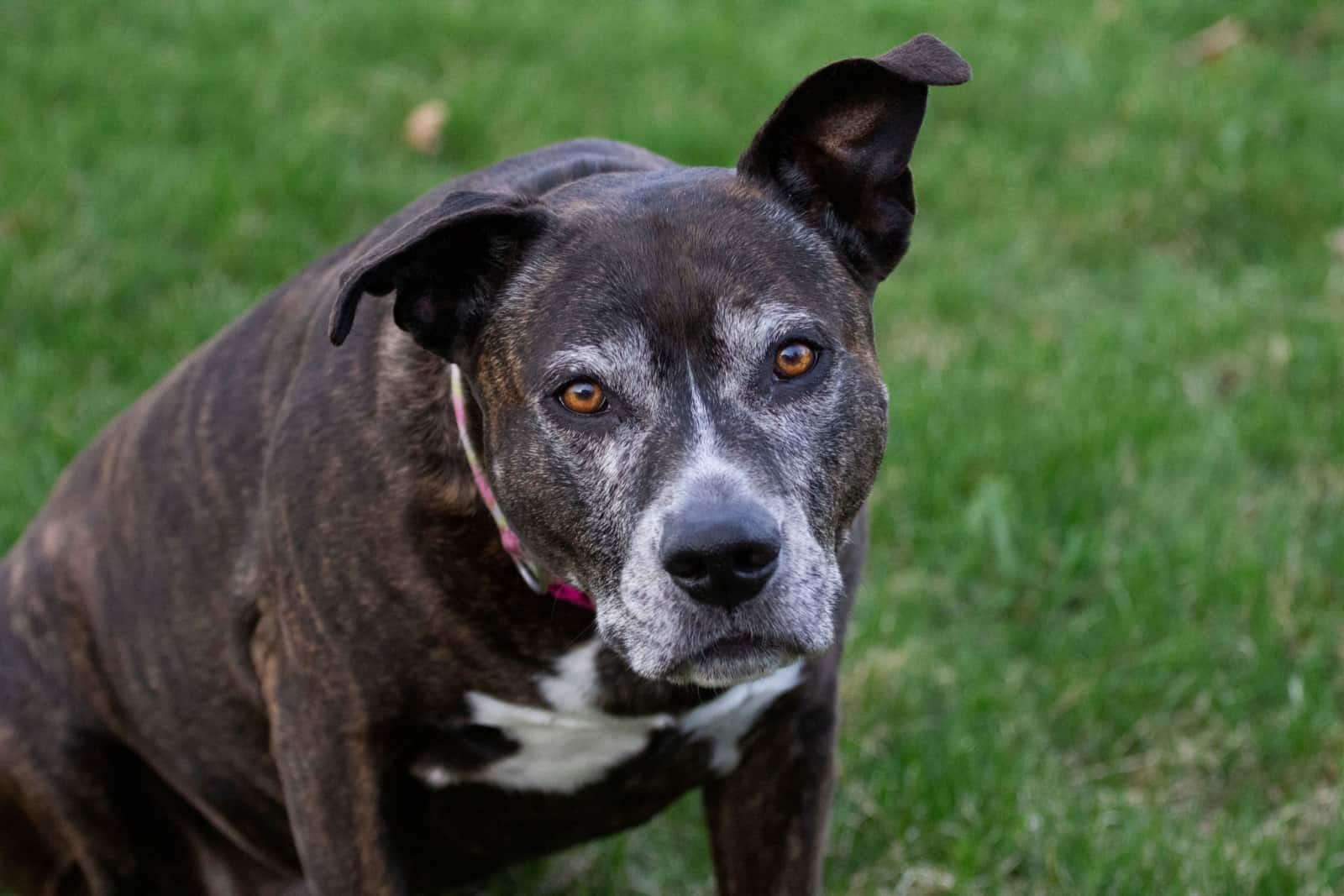Are you worried that your dog is suffering from a severe back issue? A hunched back in dogs can be a red flag and it requires an immediate vet check. However, it doesn’t always have to be alarming.
A hunched back in dogs, limping, abnormal curvature of the spine, or rear legs weakness have a plethora of explanations, and these are not unusual phenomena. Most of the time these issues are curable.
However, there are times when back arching represents a severe health issue, and it requires timely treatment.
I came up with a list of eleven possible reasons for a hunched back in your dog. The list encompasses health issues, as well as behavioral issues. Let’s take a look!
Hunched Back In Dogs: What Does It Mean?
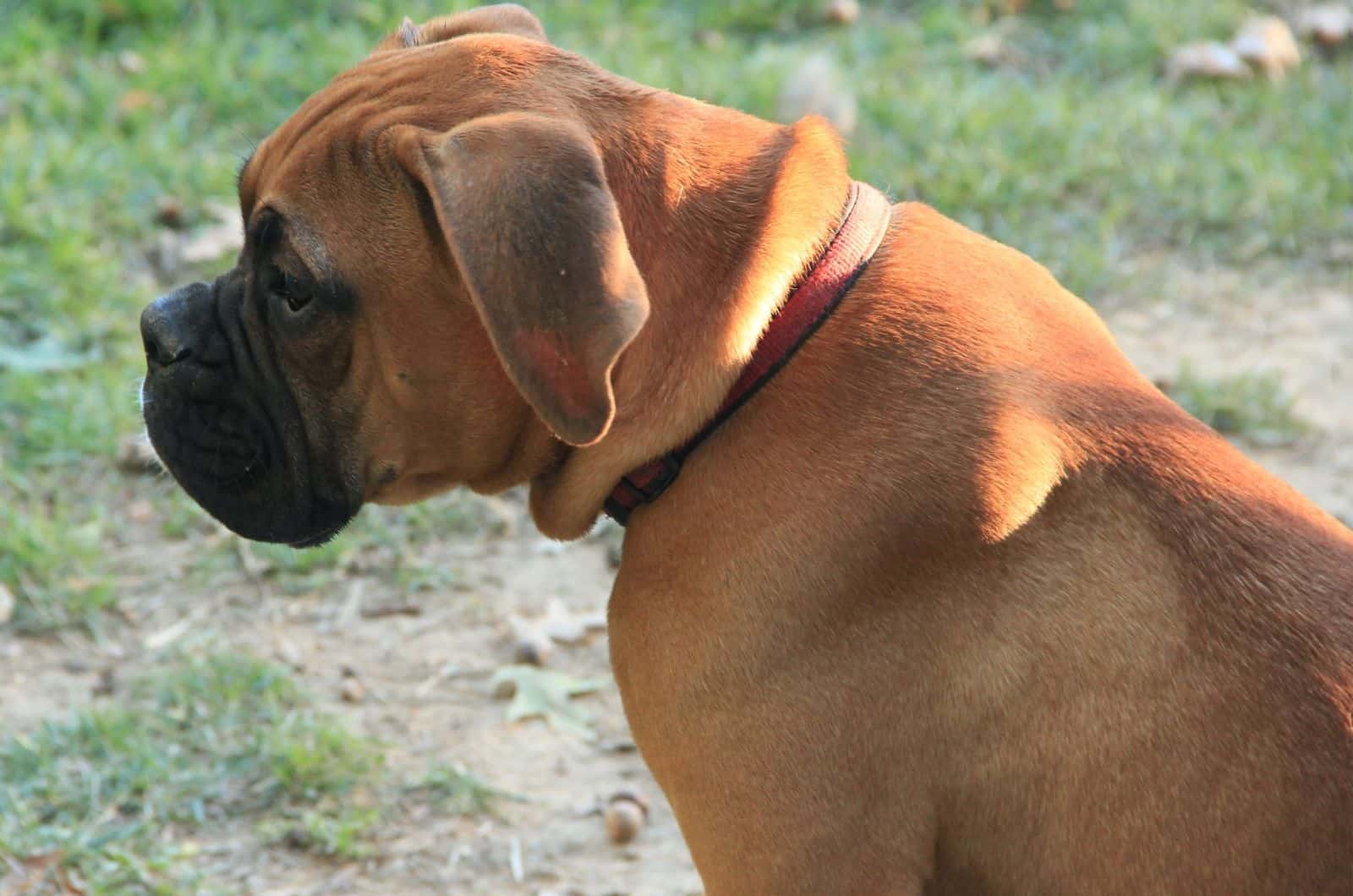
If you keep wondering: ‘‘Why is my dog acting weird all of a sudden?’’, or does your puppy keep walking off balance and have a hunched back?
Generally, a hunched back in dogs is not a separate issue, as it comes with a plethora of other symptoms. For instance, dogs suffering from constipation, or bloat, are most likely to suffer from spinal pain as well.
But is your dog arching its back without any rational explanation? That might be a problem. A hunched back in dogs can be a symptom of severe spinal diseases or progressive viral infections.
The best thing you can do is subject your pet to a vet exam as soon as possible. Pet owners usually cannot identify their puppies’ health issues, as some conditions are not that obvious. Regular health check ups are a must for all dog owners.
However, a hunched back in dogs has roots in many familiar health issues that you can identify prior to a vet visit. Let’s take a look at each of them individually and see if your dog has one of these symptoms!
1. Abdominal Pain
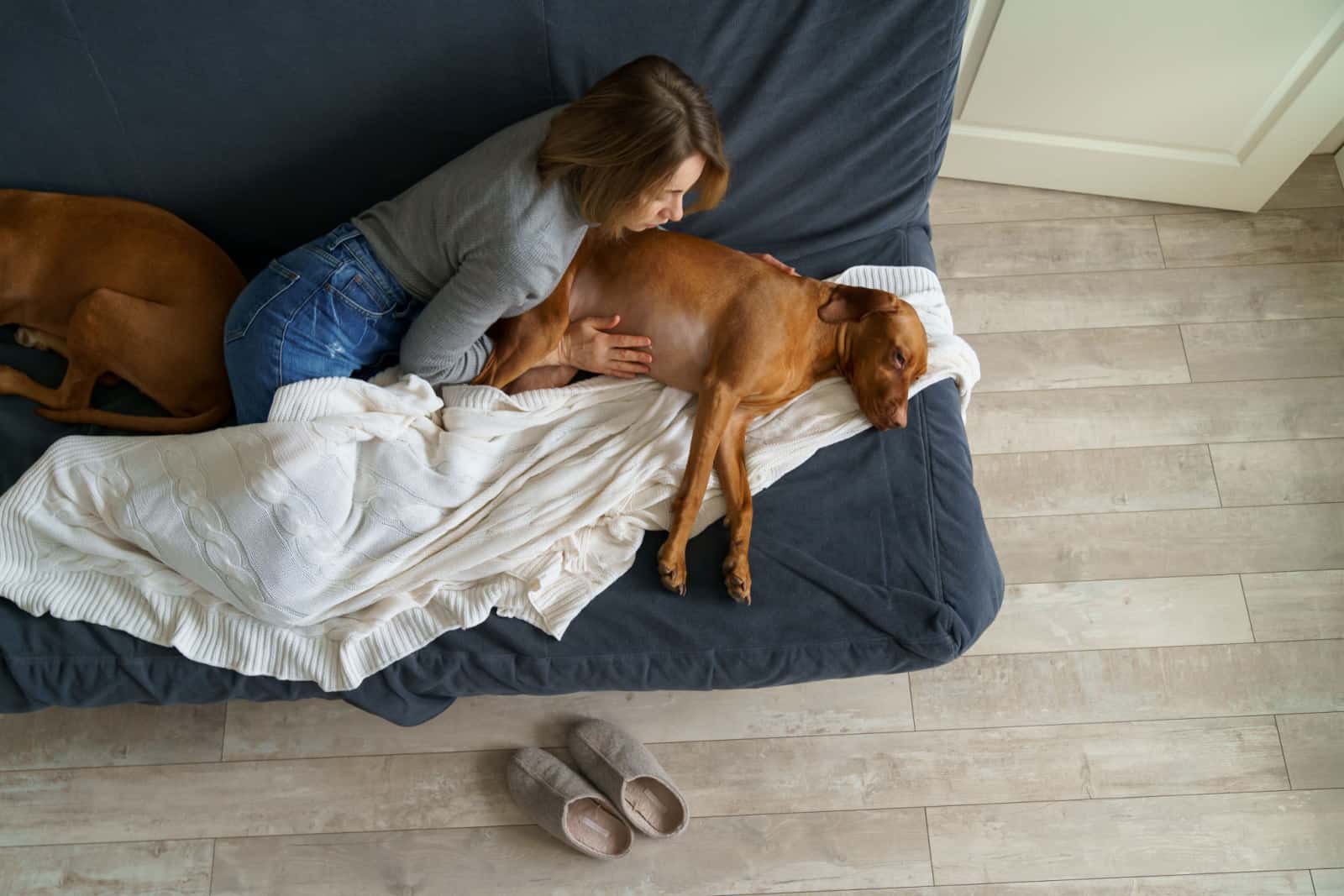
Abdominal pain is often a cause for a hunched back in dogs. There is more than one root for abdominal pain in dogs. Generally, it is caused by a poorly designed feeding chart. All dogs require a carefully designed feeding chart that includes their daily routine, size, eating habits, and musculature.
For instance, the Chihuahua feeding chart needs to be considered carefully, as small breeds require more frequent, but smaller portions of food. On the other hand, the German Shepherd feeding chart is related to fewer meals and more protein intake.
Abdominal pain occurs when your puppy eats foods unrelated to their natural feeding habits. Junk food or human leftovers are highly unrecommended, as they cannot be properly processed in your puppy’s digestive system.
Another cause of abdominal pain can be bloat. Bloating occurs due to unhealthy feeding habits. For instance, if your puppy eats once, or twice a day, it is most likely that it will swallow food more voraciously than puppies that eat more meals a day.
Bloat is a severe issue that requires immediate vet intervention.
Other causes of abdominal pain can be prostatitis, pancreatitis, gastritis, or even cancer. Make sure you always subject your dog to regular vet exams.
2. Kyphosis
Kyphosis represents a painful back issue in dogs. It is often related to the smallest dog breeds, such as Pugs, or French Bulldogs. It represents the abnormal curvature of the spine in the thoracic area.
Both male and female dogs that experience kyphosis deal with severe back pain, irregular movement of back legs, paralysis, and bloat.
Kyphosis is most of the time a progressive health issue, as it gets worse over time. Untreated kyphosis can result in decreased mobility or even paralysis. Puppies that suffer from kyphosis can be seen walking off balance and they cannot perform physically like healthy puppies.
Puppies with this issue are most likely to have an upset stomach and difficulties pooping. This is due to the pressure on spinal nerves that disables the dogs’ digestive systems so they cannot function properly. On the other hand, kyphosis in dogs will cause weakness in the rear legs.
Surgery is the only solution for this condition, but even then, a positive outcome is not guaranteed. Some dogs suffering from severe kyphosis use a wheelchair as a walking tool that helps them keep their balance.
However, dogs suffering from this condition require a carefully designed feeding chart, as bloat is a common issue in puppies with kyphosis.
3. Pancreatitis
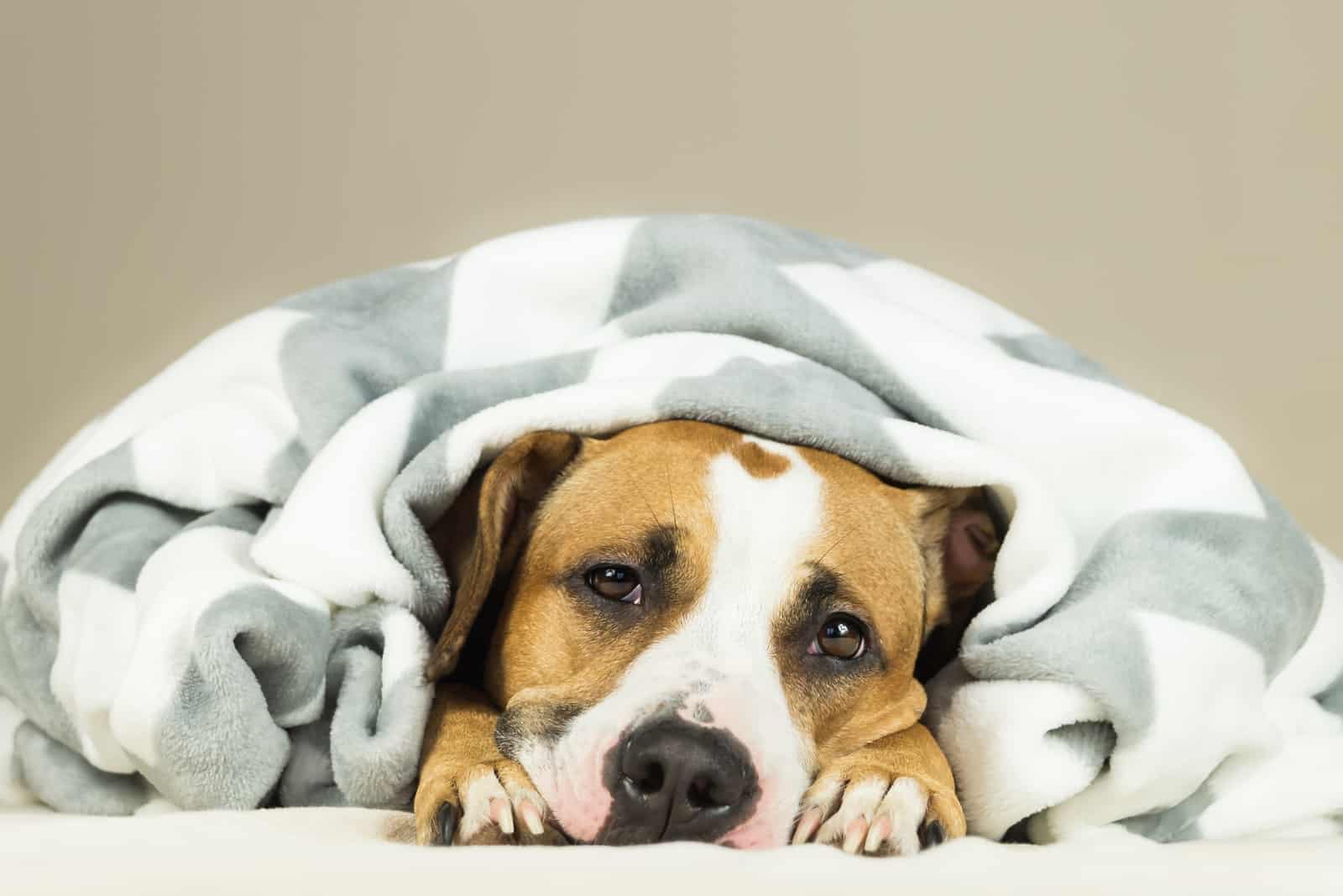
Pancreatitis is another severe abdominal issue. It can be caused by eating foods that contain high fats. However, this is not the only reason for developing pancreatitis. Most of the time the cause of this issue is unknown and cannot be identified.
Pancreatitis is an acute condition that represents the inflammation of the pancreas. The purpose of this organ is to help puppies process food. Once it occurs, it represents a severe health condition that requires immediate action.
The downside of this issue is that it cannot be properly detected with blood tests or ultrasounds. The issue is usually detected in the late stage, as it gets obvious.
Dogs throwing up white foam, lethargy, decreased mobility, lack of energy, or refusing to eat food are just some of the symptoms related to pancreatitis.
The treatment of this issue cannot be done without vet supervision and vet treatment. A vet will prescribe appropriate therapy for your puppy, but a big part of the job is on you, too.
You need to make sure your dog has a well-established feeding chart. Its feeding habits need daily supervision, too.
4. Anal Sac Disorder
Anal sac disorder is another reason for a hunched back in dogs. This is not an uncommon issue in dogs, but the treatment has to be timely, as the condition may get worse.
This disease represents the inflammation of the anal sacs and a blockage in the anal glands. Puppies that suffer from this issue cannot pass feces properly, as their sacs become swollen and impacted.
Other symptoms related to this issue are bloody feces, a hunched back, pain in the stomach area, dragging their rear legs on the ground, or licking their butt.
This issue is common for all dogs, and it can be treated with antibiotics. However, postponed treatments can worsen the condition and have severe repercussions.
Surgical removal of the anal sacs is another option if you are a dog owner. Dogs that live indoors usually don’t use this ‘‘territorial marking’’ much, as they are generally potty trained and socialized from an early age.
In other words – they can live without anal sacs normally. Dogs that have their anal sacs removed usually don’t display any side effects.
Untreated anal sac disorder can make your puppy inactive and lethargic, as the puppy suffers from severe pain in the anal area. If you notice one of the symptoms of this disease, make sure you visit a vet as soon as possible.
5. IVDD (Intervertebral Disc Disease)
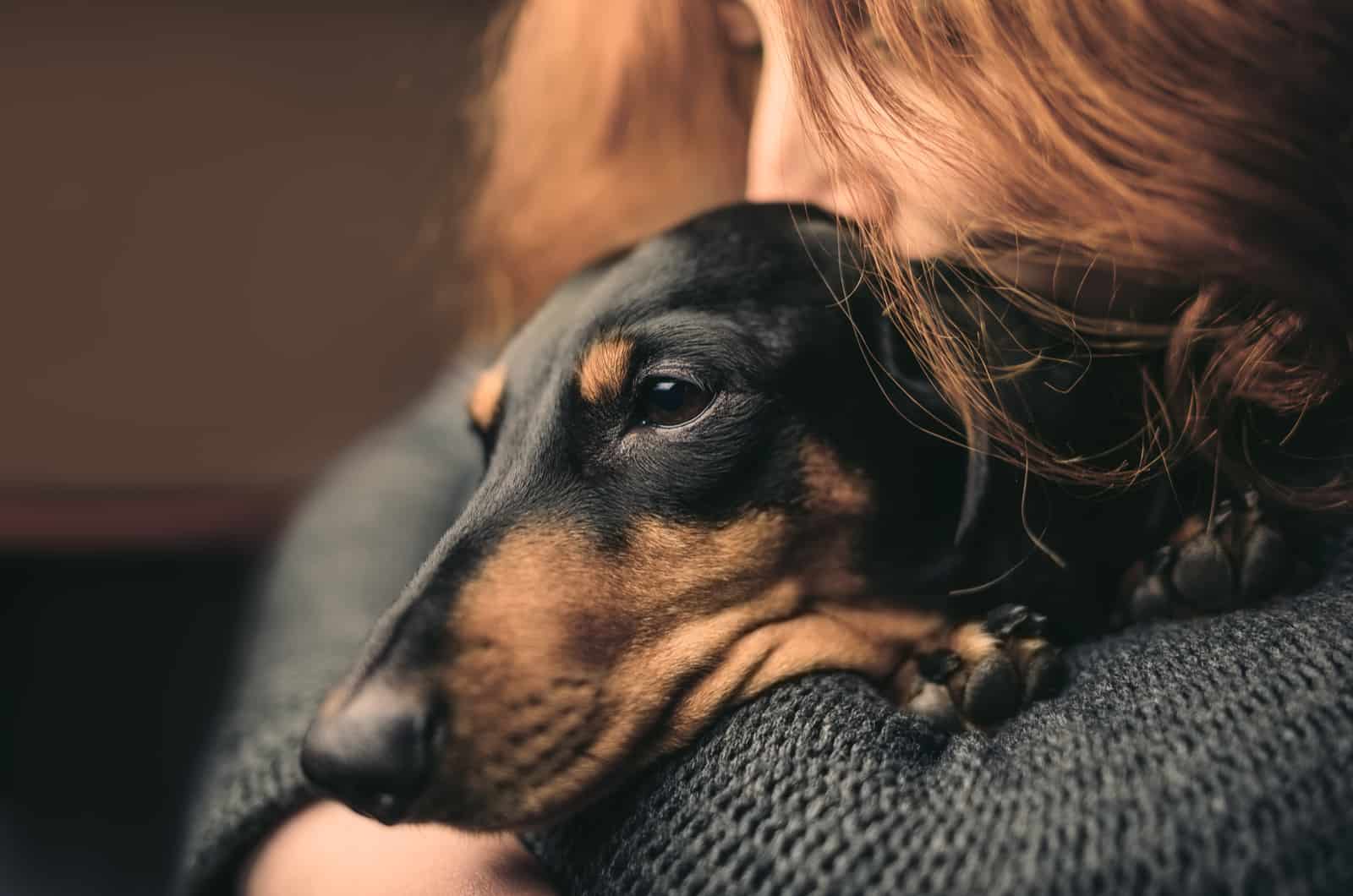
IVDD (Intervertebral Disc Disease) in dogs is a severe spine condition that affects Dachshunds the most, but other dog breeds as well.
Dogs suffering from IVDD have difficulties peeing, or pooping, they are inactive, their backs are hunched, and they experience severe pain in the mid-back area.
This issue happens as a result of trauma. Jumping or excessive running can cause IVDD when a disc tears due to irregular movements. It can cause damage to the spinal nerves, and the most dangerous version of IVDD represents damage to the spinal cord.
Intervertebral Disc Disease is a serious issue, and it requires an immediate vet reaction.
You will easily detect this issue, as puppies cannot hide their symptoms. They become overly inactive, sensitive, they lie with their back arched, or they even yelp. The issue is related to all dog breeds, but the research shows that smaller dog breeds tend to develop this issue more frequently.
Severe IVDD can cause paralysis, which is why you have to take your puppies’ daily activities into consideration. Make sure you don’t overwhelm your dog with exercise. Smaller dog breeds are not as athletic as German Shepherds, Belgian Malionis, or Retrievers.
Their daily exercise has to be based on their physical abilities.
6. Parvovirus
If you are a dog owner, you must’ve heard of Parvo disease. This major disease is caused by a parvovirus and represents a viral infection that could have a deadly outcome.
Parvovirus is another reason why your dog might have a hunched back. The virus causes severe weight loss, loss of appetite, parvo poop smell, weakness, decay of the immune system, and, unfortunately – death.
Parvovirus is an extremely dangerous disease that affects large breeds mostly. Dobermans, Rottweilers, German Shepherds and other large dogs are more prone to parvovirus than small-breed dogs.
Parvovirus is picked up by dogs smelling other dogs’ poop, sniffing, or licking. It is a very contagious virus that easily transfers from one dog to another. The virus can even be transmitted from humans to dogs.
The best possible solution for all dog owners is to subject their pets to early vaccination against Parvo disease. The vaccination usually takes place at eight to twelve weeks of age. Parvo disease is usually developed in juvenile dogs. The incubation period usually takes five to six days.
The chances of your dog surviving Parvo are high if the disease is treated timely.
7. GDV
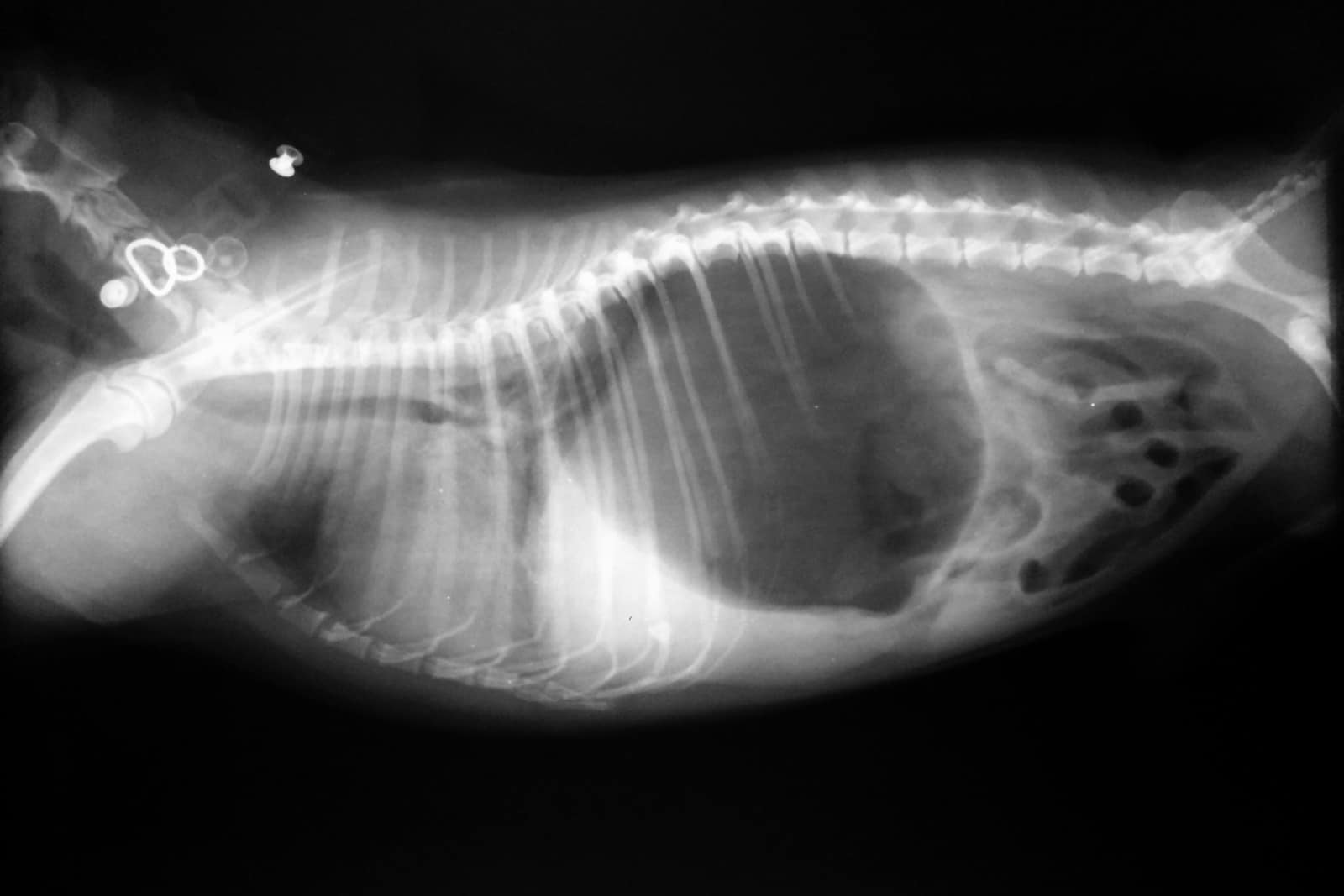
GDV (Gastric Dilatation Volvulus), popularly known as bloat, is a possible answer to a hunched back in dogs. This severe condition has roots in the stomach being filled with water, gas, or even food.
A swollen stomach, severe pain in the stomach area, hunched back, low activity, and refusing to eat – are just some of the symptoms related to this disease.
Gastric dilatation volvulus has to be treated as soon as possible, as this disease can have deadly repercussions.
This issue is related to large dog breeds most of the time, as they have deeper chests, and are known for devouring their meals when they are hungry.
There are two things you can do in order to prevent your puppy from suffering from GDV. The first is to develop a proper feeding chart for your pet. Not all dog breeds have the same food preferences, as some dogs are more sensitive to raw food, or kibbles, than other dogs.
Always consult a vet about your puppy’s feeding chart, as you want to make sure your pet gets the highest-quality food. The advice is to avoid the worst dog food brands on the market!
Another thing that you can do is take care of your puppy’s eating manner. Consult a vet about the best possible bowl position for your dog, as some eating positions are more prone to GDV development than others.
Also, try to establish a good feeding routine. Make smaller, frequent meals. That way you will help your puppy swallow less.
8. Spinal Problems
General spinal problems can be a cause for a hunched back in dogs. If you’re wondering why your dog is restless at night, or during the day, the answer might be possible spinal problems.
A slipped disc can be a symptom of a dog’s trauma. Injuries can be caused by overwhelming exercises or demanding dog training. The first thing you need to do when establishing a training routine for your dog is to consult your vet or a breeder.
Athletic dog breeds, such as Greyhounds, or Malinois, usually don’t have a problem with long hours of exercise. However, there are dog breeds that don’t stand excessive physical activities, such as Chihuahuas, or Pugs.
Spinal problems, such as kyphosis, or scoliosis are usually progressive and cannot be one hundred percent cured. However, surgical procedures can help your puppy to some extent.
There are some extreme spinal injuries that cause a whole set of other symptoms. For instance, lower back injuries usually affect your puppy’s bladder control, reduced mobility of the rear legs, abdominal pain, or restless legs.
It is not rare to hear dogs with spinal problems yelp. The recovery from spinal injuries is long and painstaking.
9. Constipation

Constipation occurs in both female and male dogs. It is caused by unhealthy food, improper feeding habits, or poorly designed feeding charts, usage of some drugs, or having a foreign body inside a stomach.
However, the reasons for constipation might be psychological, too. Stress, anxiety, fear, or other trauma can trigger constipation in your dog. For instance, a dog sleeping under the bed and refusing to eat food can be an obvious example of anxiety and stress.
In order to cure constipation in an anxious dog, you need to reconsider your pet’s daily routine and start over. The overall process takes time and requires a lot of patience.
However, if your puppy suffers from constipation due to poor feeding habits, you need to redesign its feeding chart as soon as possible. Eating unhealthy food in the long term can cause a whole set of other diseases, such as obesity, diabetes, cardiac diseases, or bone injuries.
Constipation is treated by establishing a proper feeding chart, timely meals, giving small, frequent meals, potentiating more liquids, establishing a proper training routine, or medically.
If you notice a swollen stomach in your puppy or other symptoms related to constipation, make sure you visit a vet as soon as possible. Every delay in medical treatment will cause more pain and lead to other severe conditions.
10. Osteophytes And Spondylosis Deformans
If you’re wondering why your dog arches its back – the reason might just be osteophytes or spondylosis deformans.
Osteophytes, or bone spurs, are related to older and senior dogs. The same goes for spondylosis deformans. This is not a severe health condition, as it is not manifested by severe pain.
However, canines with these diseases can have hunched backs and their mobility is somewhat lower than in healthy dogs.
Spondylosis and osteophytes are cured by physical therapy, stretching, and light exercise. You need to make sure you don’t overwhelm your dog suffering from spondylosis with exercise. Here we are talking about senior dogs mostly, they are not capable of doing high-level exercises.
Dog’s behavior with spondylosis deformans is usually lethargic. Lack of proper movement disables older dogs from jumping, running, or even walking properly. These dogs are usually laid back, and they spend most of their time lying around the house or sitting.
Make sure you take care of your older puppies’ feeding chart properly. Dogs with spondylosis need to have healthy meals, as their condition may be worsened by obesity.
11. Stretching

There are some reasons for a hunched back in dogs that don’t have roots in severe health issues. For instance, your puppy can arch its back due to stretching, excitement, or that’s just the way they are.
Stretching is common for all dog breeds. In some cases, it can look like your dog is in pain, but that’s just not true. Large dog breeds can manifest a hunched back when stretching more vividly than smaller dogs. However, this doesn’t mean that your dog is suffering from some disease.
Stretching is a natural process in any dog. It is usually displayed after sleeping. This is common for both dogs and cats, and even their movements are the same. They stretch their hips, both front and back legs, and lower back.
There are many dog’s behaviors that dogs share with humans. This is especially related to dogs that live with humans indoors.
For instance, dogs barking whenever humans fight or acting nervously around food o’clock are just some of the many dogs’ behaviors that could be easily explained by human language. Stretching is one of them.
If, however, you notice that your puppy is stretching unusually – you should pay your vet a visit, just in case.
What Is A Way To Tell If A Dog Has A Hunched Back?

You can easily detect if your puppy has a hunched back. It is obvious and it can be seen even by the untrained eye. However, you need to check other symptoms – if there are any.
A hunched back in dogs is not necessarily a bad issue. It can be due to stretching, or excitement. However, if your puppy keeps its back arched all of a sudden, that’s a cause for a vet visit.
There are some weird dog behaviors, such as dogs humping the air, dogs standing on you, or dogs arching their backs. There is always an explanation for that, but sometimes the cause isn’t that obvious, and it requires a thorough analysis.
A hunched back in dogs usually comes with other symptoms. If you notice lethargy, a swollen stomach, throwing up, weakness, or yelping – that means your dog is suffering from a major health issue.
A dog’s stomach issues are usually related to a hunched back in dogs. Abdominal pain, prostatitis, constipation, or bloat cause severe pain and puppies arch their back as some sort of a natural instinct.
In these cases, a hunched back won’t be the first thing you will notice, as a dog will alarm you in other ways, too. The important thing is to help your canine as soon as possible, as some of these issues can be deadly.
How To Prevent A Hunched Back In Dogs?
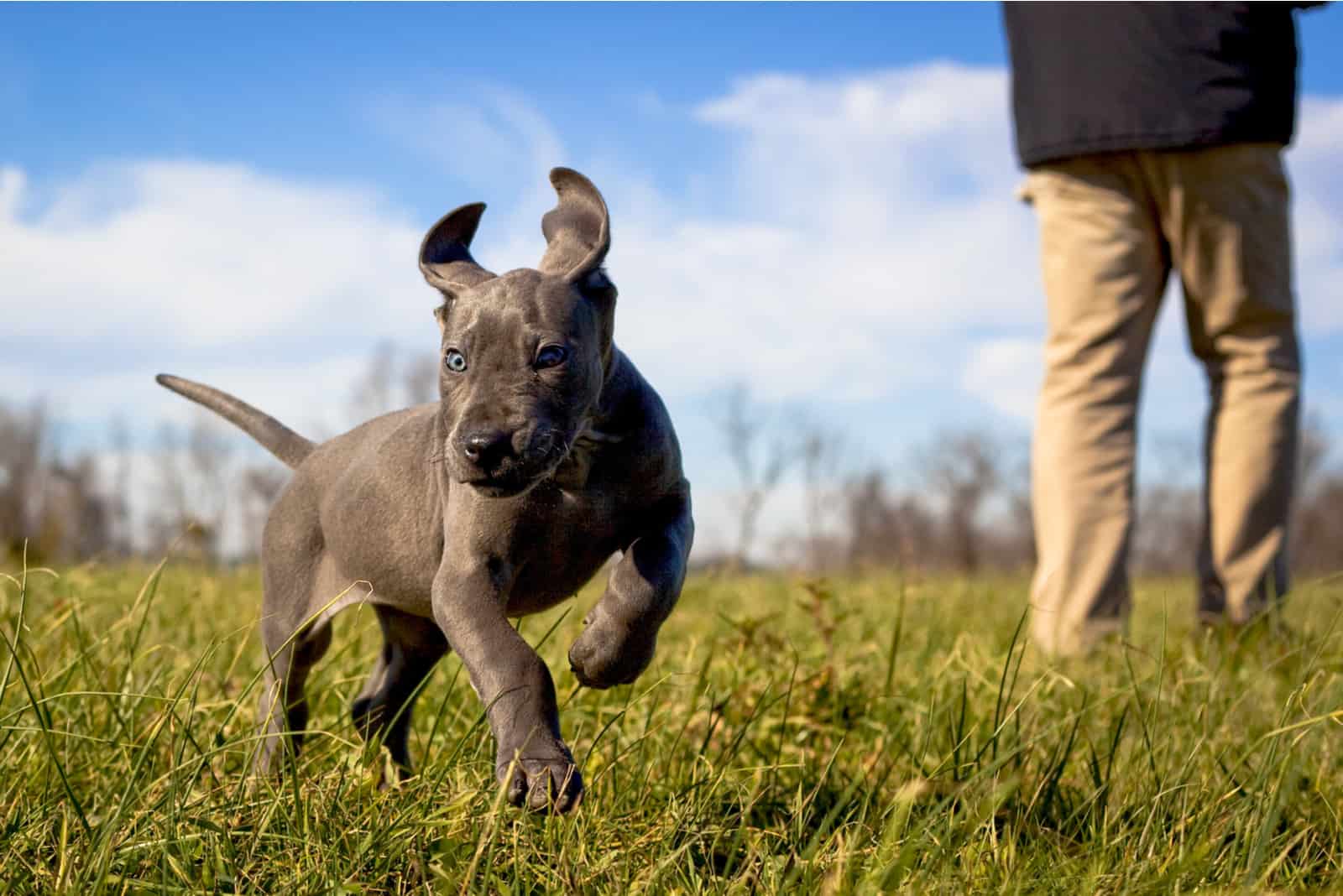
There are times you can prevent your puppy from having a hunched back. A hunched back is usually related to some other, major health issue, such as bloat, constipation, parvo disease, IVDD, or anal sac disorder.
In order to prevent it, you need to make sure your puppy gets the finest feeding chart ever. A breeder will usually instruct you on how to develop a proper feeding chart for your puppy. However, you need to consult a vet, too, as there are some foods your puppy might not take well.
Furthermore, you need to make sure your puppy gets the proper amount of exercise a day. If you have a small breed in your home, make sure to come up with an appropriate training routine.
On the other hand, if you are a large dog breed owner, don’t make a couch potato out of your puppy. Bear in mind that Cockapoo training will always be different from Doberman training. Each puppy has its own pace that you need to follow.
This way you will keep your canine healthy, safe, and happy.
However, there might be times when you cannot prevent your puppy from catching an illness. In these cases, vet visits and medical treatments are a must. Some diseases, such as Parvo, or GDV, can be deadly if not treated on time.
Here are some particular tips on how to prevent a hunched back in dogs.
1. Vet Check Ups
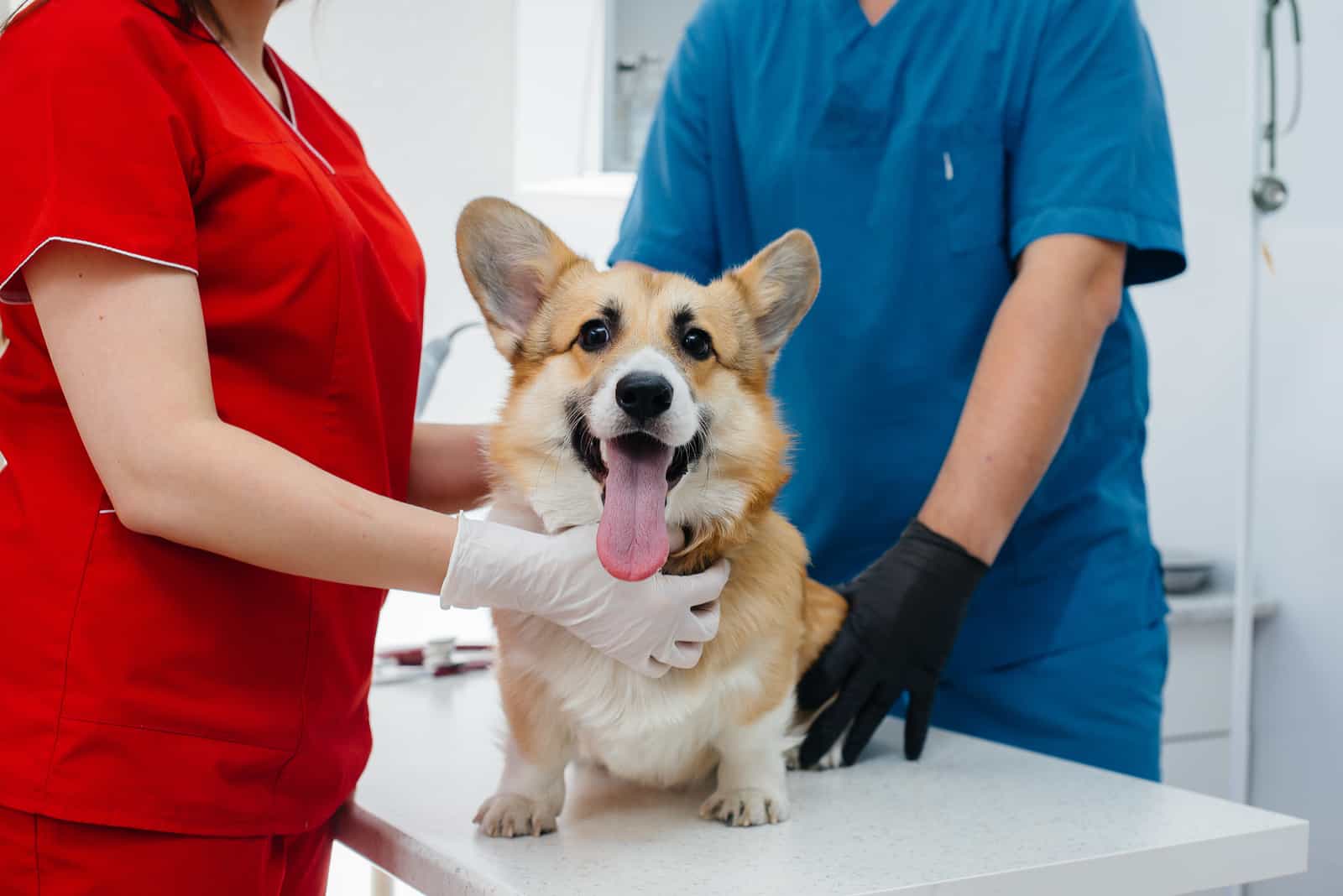
Vet check ups are always a must for any dog breed. Reputable breeders will always instruct you to keep visiting your vet on a regular basis, despite the fact that your dog is healthy. Even the healthiest dog breeds in the world can suffer from some unexpected diseases that cannot be detected by a dog owner.
Generally, puppies are picked up from a breeder once they turn eight weeks of age. By this age, they are already vaccinated, dewormed, and they have been subjected to regular DNA testing. From an early age, you can see whether your dog suffers from some hereditary disease, or not.
However, there are some conditions that develop as a result of excessive exercise, improper feeding, or a bad quality of life. Is your dog arching its back all of a sudden? Well, the reason might just be one of the three aforementioned things.
Timely vet visits are key. As soon as you notice any sort of irregularity in your dog’s behavior – go to a vet.
2. Proper Feeding Chart

Establishing a good feeding chart saves you from a plethora of puppy diseases in the long run. How, you ask?
It’s simply because a well-organized feeding chart and healthy dog foods impact the overall health of your puppy. Food can be used as positive reinforcement in your puppy’s socialization training.
Unhealthy foods can cause diabetes, obesity, and cardiac diseases. Also, unhealthy feeding habits impact a dog’s behavior and daily routine. Generally, dogs that don’t have a healthy feeding chart are more prone to laziness, and they become overly aggressive.
That’s because they don’t burn off their energy during the day and they become addicted to food. Obesity is a serious issue that demands medical treatment.
Food can be a natural boost to your puppy’s immune system. It can also affect your puppy’s health in a positive way. For instance, there are some amazing non-prescription dog foods for urinary health that could prevent your puppy from being exposed to constant urinary infections.
Monitor your pet’s feeding chart on a daily basis. That’s an honest recommendation that could help you secure a happy life for your pet.
3. Exercise
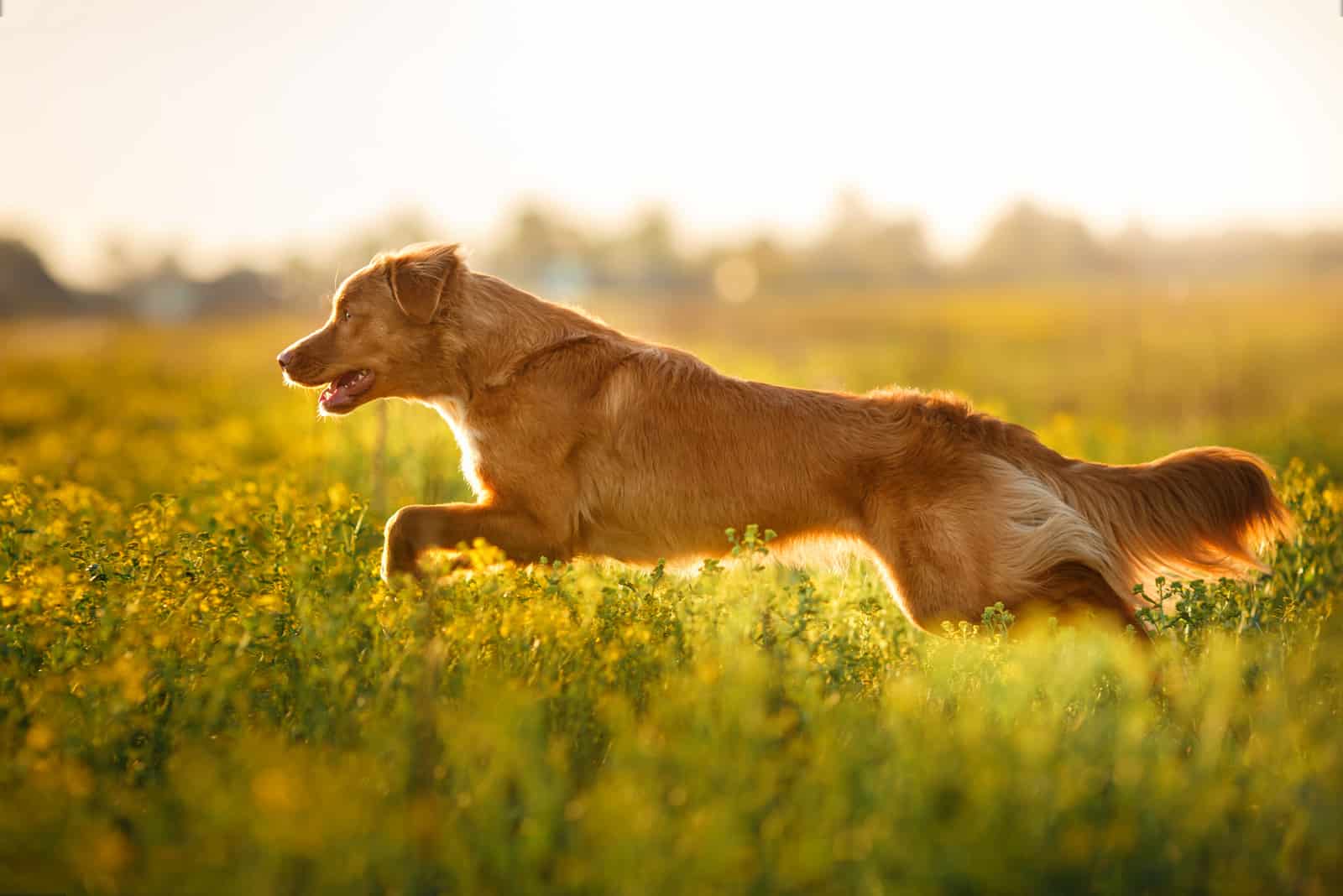
Is your dog arching due to constant laziness? Not anymore. My next piece of advice is to implement a good exercise routine in your puppy’s daily schedule. It will save you from expensive medications and lifetime health exams.
Exercise is important for any dog breed. It helps your puppy develop a good, positive nature and maintain its physical strength. Exercise is a great way to keep your puppy’s body balanced, and to build muscles which will prevent your puppy from suffering from spinal injuries.
There are some great supplies, such as dog training collars, that will help you perfect your puppy’s training routine.
Exercise is a great way to avoid a hunched back in your dog. It will keep a puppy flexible and agile at all times. However, make sure you implement proper training routines. Smaller dogs will usually demand fewer hours of exercise in respect to their larger counterparts.
Additionally, always use exercise to stimulate your pets mentally. Socialization and obedience are perfected throughout a good training routine.
FAQs
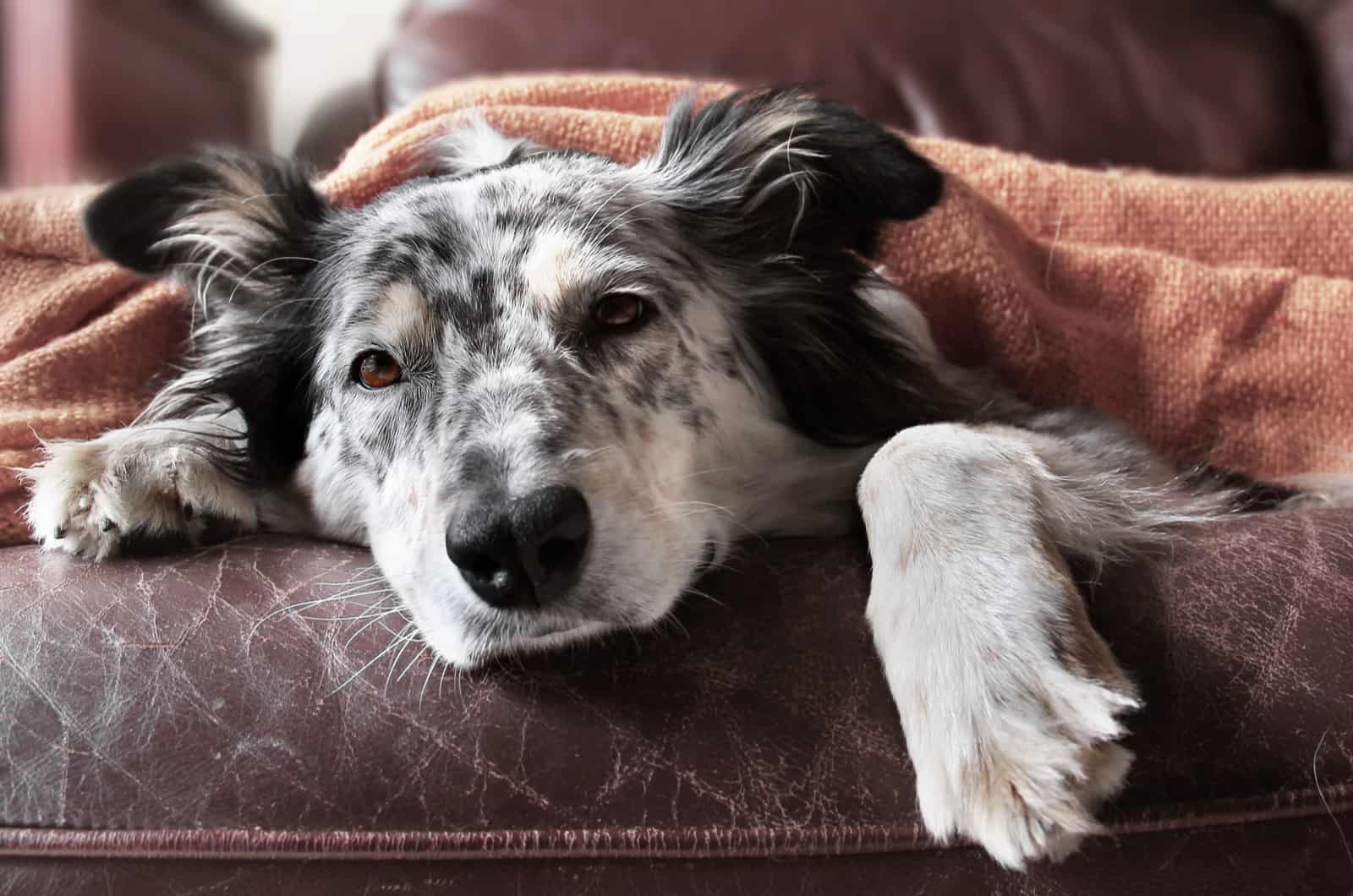
1. What Is A Sign Of A Hunched Back In Dogs?
A hunched back in dogs is usually not a separate issue in your dog. There are some other manifestations, such as abdominal pain, vomiting, lethargy, limping, low mobility, back pain, and a swollen stomach that come along with a puppy’s hunched back.
This means your puppy is suffering from some severe health issue that requires immediate vet intervention. A hunched back in dogs, although a common issue, is generally not a harmless condition.
If your dog arches, or yelps, it means that it is suffering from severe pain in the abdominal, or back area. In order to determine the type of disease – you need to look into other symptoms, too. However, dog owners will usually have a problem detecting a disease. That’s why an immediate vet visit is crucial.
Untreated health issues related to a hunched back can have deadly repercussions. Medical conditions, such as Gastric Dilatation Volvulus, or Parvo, are extremely dangerous and they require medical treatment, especially the latter.
You cannot know if your puppy will survive parvo, but you need to make sure a puppy gets all the needed treatments, including vaccination, pills, and an incubation period.
2. What Are The Possible Causes Of A Hunched Back In Dogs?
There are many reasons for a hunched back in dogs. However, the most important are bloat, parvovirus, pancreatitis, abdominal pain, kyphosis, scoliosis, IVDD, or spinal problems.
On the other hand, there are some harmless reasons for a hunched back, such as stretching, or excitement.
The first set of reasons are major diseases that require immediate vet visitation and treatment. Any dog can experience a hunched back, but there are some puppies that develop this issue more frequently.
For instance, Dachshunds are more prone to this issue than Greyhounds.
The best Greyhound breeders will make sure these puppies are athletic, agile, and within the standard weight proportions. The same goes for Dachshund breeders. However, the latter is genetically more susceptible to spine injuries and a hunched back.
Medical causes of a hunched back in dogs have to be treated timely. Otherwise, dogs’ conditions can be worsened and cause deadly repercussions. This especially goes for GDV, parvovirus, and pancreatitis.
Conclusion
A hunched back in dogs is a common issue that affects all dog breeds. However, this can be a symptom of many severe health conditions.
In order to determine what a hunched back in your dog stands for, you need to look into other symptoms, too.
However, the best thing you can do for your dog is to subject it to regular vet exams. Sometimes a hunched back in your dog is not that obvious and it cannot be detected by an untrained eye.
